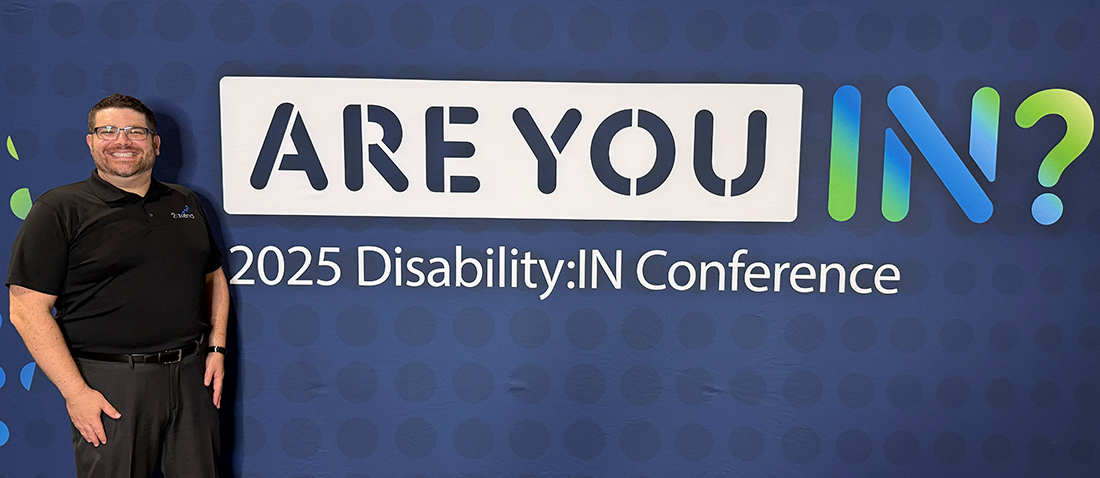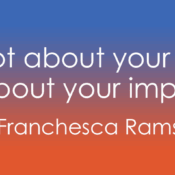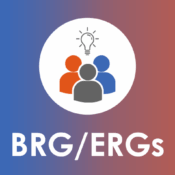
The $13 Trillion Market: Why Disability Inclusion Is a Business Imperative
This week, I had the opportunity to join global changemakers at the Disability:IN Global Conference & Expo — an event that continues to evolve how we think about accessibility and disability inclusion.
As this week has been my 7th Disability:IN Conference, it is clear that the conversation has shifted and that leading organizations are focusing on cultivating accessible cultures and organizations rather than solely providing individual accommodations.
This goes hand in hand with treating disability inclusion as a core business strategy - not as just goodwill or compliance. When done right, they drive customer loyalty and strengthen their bottom line.
Globally, over 1.3 billion people live with some form of disability — that’s 16% of the world’s population, according to the World Health Organization (WHO). Factor in the friends, family members, caregivers, and colleagues who support or advocate for this community, and the economic reach expands exponentially. The World Economic Forum (WEF) estimates that the disability market, when inclusive of allies, holds over $13 trillion in annual disposable income.
Disability communities aren’t a fringe audience. We are one of the largest, most underserved customer and talent segments on the planet.
Leading companies are recognizing the need to address physical, attitudinal and systemic barriers to accessibility and disability inclusion.
A Missed Opportunity with Real Consequences
However, let's be honest.
There are many organizations that continue to perpetuate these very barriers. Whether it’s a lack of know-how or commitment from leadership, it results in inaccessibility being baked into the design of everyday systems. From hiring processes and customer service platforms to software development and event planning - barriers to accessibility and inclusion are unfortunately woven deep in the fabric of these organizations.
With respect to the disability community as a whole, we’re often left facing inaccessible experiences directly affecting our impressions of the brands we use. Uncaptioned product videos, websites incompatible with screen readers, and even community spaces fail to provide adequate communication access; leaving the same bitter taste: exclusion.
What’s often misunderstood is that this exclusion isn’t always intentional; it’s systemic. Exclusion is the byproduct of outdated assumptions — like believing people with disabilities are rare, or that accessibility only matters when someone files a formal request.
The reality is: disability is the only identity group anyone can join at any time. Whether through aging, chronic illness, injury, or genetics, disability touches every demographic. Yet… There are organizations that are still playing catch-up.
Those who have participated in the Disability:IN Conference this week know that leaders are no longer asking if disability inclusion matters. They're asking how fast they can implement it before they fall behind.
Disability Inclusion Beyond Access — The Strategy
Disability inclusion is not about checking boxes or offering accommodations when prompted. It’s about embedding equity and accessibility into your operations, systems, and brand from the get-go— not as a nice-to-have, but as a business imperative.
When organizations prioritize accessibility upfront, they unlock real strategic advantages. Customers stay loyal because they don’t have to fight to be included. Employees feel seen and supported, which boosts retention and performance. Innovation expands because more perspectives are built into the design process.
Accessibility becomes a lever for growth, not a barrier to it.
With that said, the Disability Tax comes to mind.
The Disability Tax refers to the extra emotional, administrative, and financial burdens that disabled individuals face when advocating for basic access and accommodations that should already be provided. For Deaf, DeafBlind, and hard of hearing communities, this burden is known as #TheDDBHHTax.
This tax isn’t hypothetical… The burdens manifests in missed meetings, reduced productivity, and stalled career growth. Ultimately, they contribute to poor experiences and erode trust between businesses and the communities they serve.
The Future Belongs to the Inclusive
The good news? Some organizations are already leading the way.
Companies participating in the Disability Index (DI), a joint initiative between Disability:IN and AAPD, demonstrate what is possible when businesses look within their own operations. In fact, over half of organizations participating in this year’s DI study reported an increase in strategic disability inclusion prioritization, leveraging inputs from user-based usability studies to improve their long-term accessibility strategies (Disability:IN, 2025).
Disability:IN Corporate Partners have the opportunity to conduct meet and greets with certified Disability-Owned Business Enterprises (DOBEs) throughout the year and at the Disability:IN Conference. At 2axend, we’ve benefitted from these sessions and have had the opportunity to work with companies due to the connections we’ve made during these meetings.
Furthermore, these unique opportunities not only enhance supplier diversity, but also generate employment opportunities for people with disabilities. Case in point: Disability:IN has reported that Disability-Owned Business Enterprises (DOBEs) employ people with disabilities at a rate 10 times higher than non-DOBEs. How’s that for an inclusive approach?.
Disability:IN also offers the Next Gen Leaders program, driving mentorship and recruitment for young and emerging professionals with disabilities. Initiatives like this directly contribute to the Disability Economy - driving our collective buying power through long-term career growth.
Yet, the common sentiment that has been shared throughout the week is that the journey cannot stop here.
Disability inclusion isn’t effective as a siloed effort or a momentary pledge. Organizations must leverage both lived experience and operational strategy to deliver sustainable, measurable results.
That’s where 2axend comes in. We use our lived experience as Deaf professionals to help organizations align accessibility with business outcomes—from updating procurement protocols and onboarding systems to interpreter matchmaking and staff training—ensuring disability inclusion is built into the structure, not bolted on after the fact. After all, when inclusion is designed with the community in mind, the outcomes speak for themselves.
A Final Thought
Disability inclusion isn’t charity. It’s not about complying with the Americans with Disabilities Act. It’s about building trust, fostering loyalty, and staying competitive in an evolving world.
As we leave the Disability:IN conference inspired, let’s not lose momentum.
Let’s turn the conversations into commitments.
If your organization is serious about leading — not lagging — in the $13 trillion disability economy, let’s discuss. At 2axend, we’re ready to meet you wherever you are on your accessibility journey and help you achieve sustainable transformation.
The future of business is being inclusive. The question is: will your organization be part of it?



